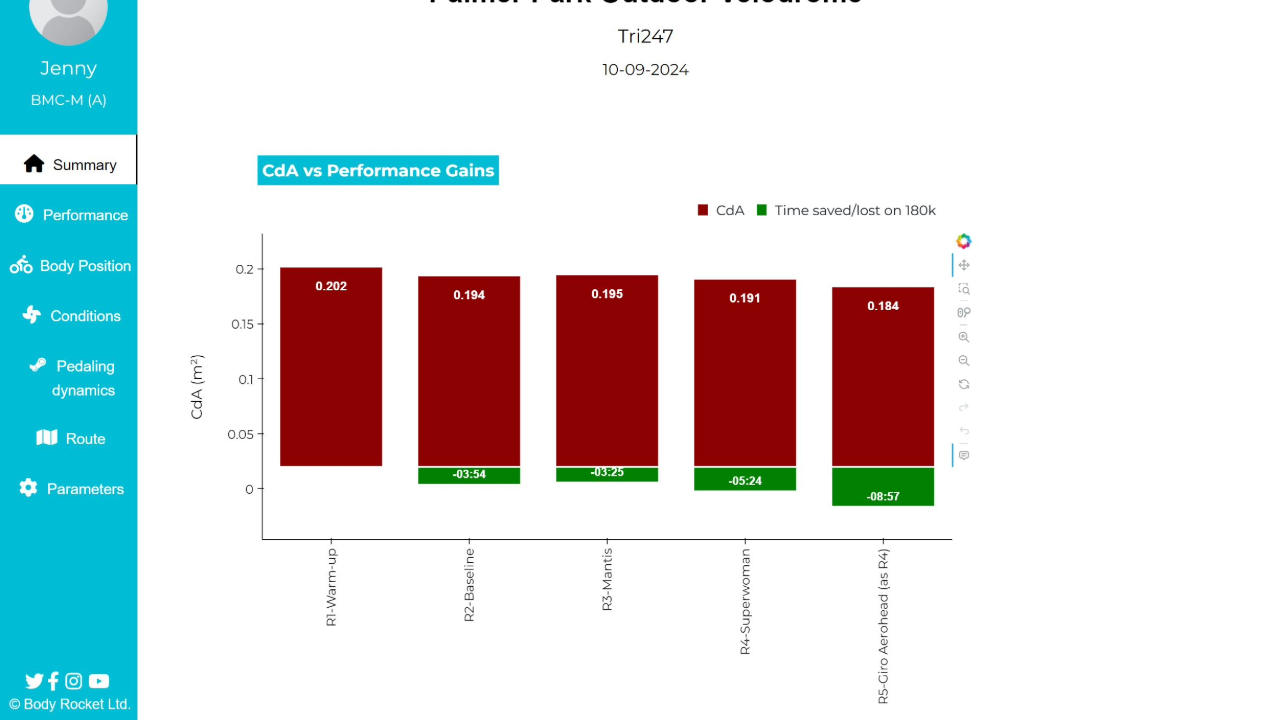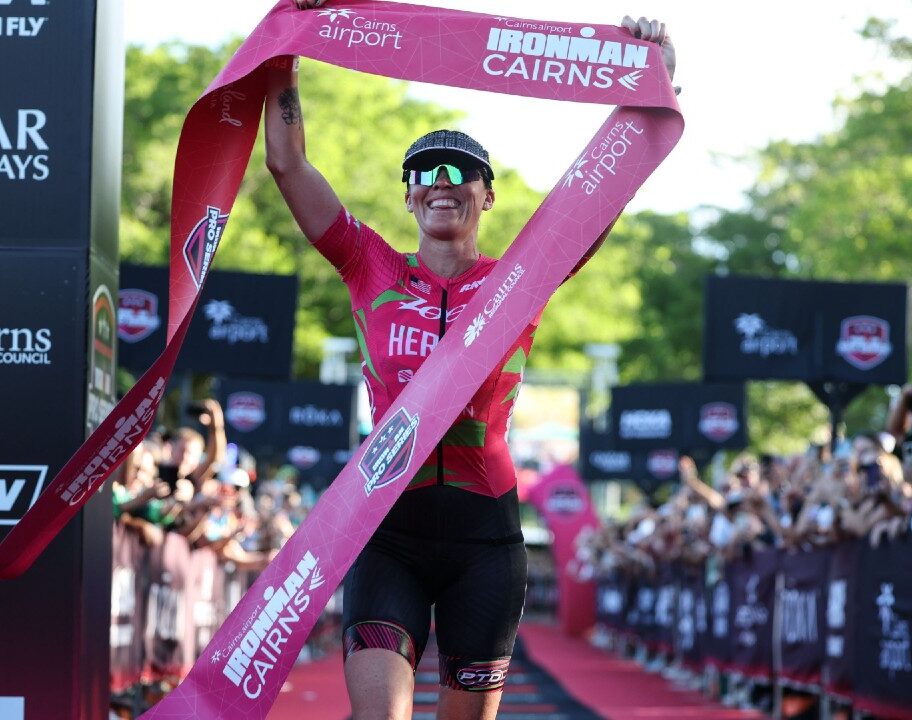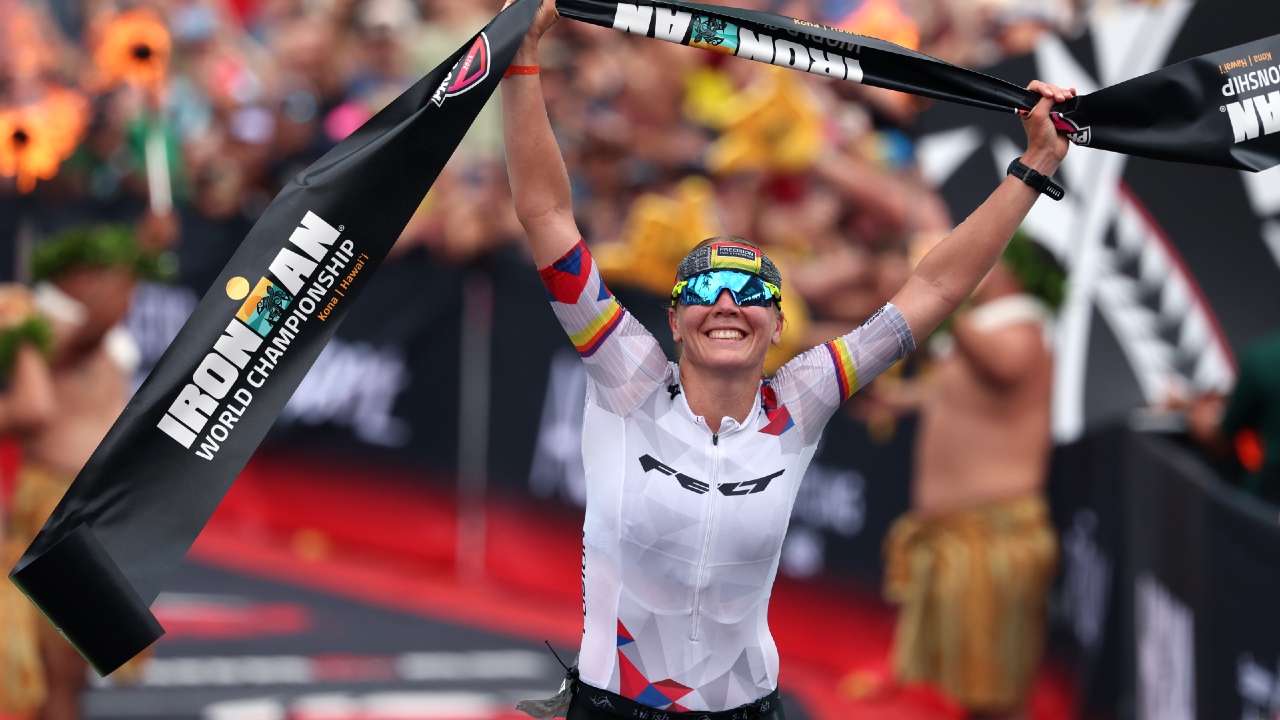Cycling speeds in triathlon are getting faster and faster, both in the PRO fields but also among the age-groupers. And that means if you want to be competitive in your age group and have a chance at qualifying for events like Challenge Family’s The Championship and the IRONMAN World Championship. Being able to ride as fast as possible, as efficiently as possible so you still have firepower left for the run, is more important than ever.
If you want to get significantly faster on the bike for your next triathlon, of course you’ll need to put the time in to improve your bike fitness, strength and handling skills. But for plenty of us, there’s also a strong chance we’re losing valuable watts out on the course because we haven’t come close to nailing our cycling aerodynamics.
Optimising your bike set up and kit choices to reduce drag can help you to unlock ‘free’ speed on the bike, and get the most out of your current cycling fitness. And while a few watts saved here and there might not sound that significant, those aero gains can actually add up to several minutes saved on the bike once you get up to longer distance racing.
We take a look at how you can improve your aerodynamics on the bike to ride faster for the same amount of effort – helping you on your way to your next PR, and maybe even the podium!
How to get more aero on the bike to improve your speed
Before we get into the more costly realms of upgrading your wheelset – or even having an N+1 moment and getting a brand new bike. Let’s first take a look at some of the lower cost, ‘easy win’ adjustments you can make to optimise your existing bike set up.
Improve your bike position
One of the most effective changes you can make to be more aero on the bike is taking the time to improve your cycling position. When we talk about being ‘more aero’ we’re actually talking about reducing how much drag we create, and therefore how much resistance from the wind we have to overcome to move forward. And your body is said to create approximately 80% of all drag. So finding the most effective body position is key.

In the past, finding the most aero cycling position would need to involve a trip to the wind tunnel. But there’s now new technology out there which allows you to test your aerodynamics out in the real world. Body Rocket have developed on-the-bike aero sensors which isolate the rider and calculate how much drag your body creates in different positions.
“What we’ve done is take the concept of a wind tunnel, shrink it, and put it onto a bike. Essentially, we’ve moved the wind tunnel into a real-world scenario… We typically see a 15-20 watt saving in the first session [with Body Rocket] just by tweaking positions. Equating to significant time savings over various distances.”
– Matthew Hutchings, Body Rocket
By doing this testing in real-world settings, you can test out multiple options without needing to keep going back to a wind tunnel. And you also find the most aero position taking into account how you shift around on the bike as you go round corners or get hit with an unexpected gust of cross wind.
Resist the temptation to go too aggressive with your riding position
When you’re looking at making changes to your cycling position. It’s important that you balance aerodynamics with comfort and practicality – especially if you’re racing long distance triathlons. It’s no use being ultra-aero if you can’t push power or you have to sit bolt upright after 20 minutes because the position is too aggressive and uncomfortable to hold for the full distance.
Tech like Body Rocket is useful here because alongside the real-time drag force measurement to help you test out different positions and work out what is the most effective to reduce your CdA. You also get other dynamic data alongside the aero measurements such as your pedal stroke efficiency, power output and weight distribution on the saddle. So you can refine your set up until you find the sweet spot that balances aerodynamics with efficiency and comfort.
Upgrade your bike helmet
When you’re cycling, your head makes up a significant portion of the frontal area presented to the wind. And so your bike helmet choice has an impact on how the air flows over you, and therefore how much drag is created.
Aero road helmet vs aero TT helmet – how much difference does a TT helmet make?

Time trial (TT helmets) are typically larger helmets, with a visor across the front. They’re designed to be as streamlined as possible. But let’s face it, they make you look a bit like you’ve turned up dressed as a Storm Trooper. So is it worth losing style points to make aero gains?
We headed to an outdoor velodrome and used the Body Rocket system to test out the difference between an aero road cycling helmet, and an aero time trial helmet in terms of reducing drag and time saved over the Ironman bike distance. In this instance, we tested out the Specialized S-Works Evade 3 road cycling helmet versus the Giro Aerohead TT helmet.

You can see from the screen grab above that once we’d found the most aero position, switching to the Giro Aerohead TT helmet reduced the CdA by a further 0.007. That might not sound like much, but over the 180km Ironman bike distance, that would be equivalent to riding 3 minutes and 33 seconds faster just by switching the helmet!
Factor in weather conditions when making helmet choices
While that time saving might make choosing an aero TT helmet seem like a no-brainer. It is important to consider the weather conditions you’ll be racing in. TT helmets tend to offer less cooling compared to a road helmet – the lack of vents is partly what helps them to be more aerodynamic. If you’re planning to wear a TT helmet, make sure you’ve tested it out in hot conditions before race day to see how your body responds. It’s also worth going for a helmet which as at least some cooling features to help manage your temperature. If you’re someone who really struggles in the heat, weight up whether the aero gains of a TT lid are going to outweigh the potential performance cost later in the race if you over heat.
Wear an aerodynamic tri suit
If you’re not already racing in a tri suit – it’s definitely worth taking the hit on your style points and opting for the stretchy all-in-one ensemble. You’ll save yourself a huge amount of time on your overall race time if you’re not wasting several minutes getting changed in T1.
But if you’re already racing in a tri suit, consider upgrading to a more premium aero option if you really want to tick every box on the aero front. The high end tri suits go through a huge amount of research and development to optimise which fabrics are used where, to reduce drag and make the suit as aero as possible. We took a deep dive into the tech behind tri suits, and after crunching some numbers found that the average saving an aero tri suit offers could reduce the CdA of an average age grouper enough to shave 2 minutes off your triathlon bike split without even trying!
After his career-changing podium at IRONMAN Frankfurt, PRO triathlete Kieran Lindars credited his BornBound tri suit with helping him to become significantly faster and more efficient on the bike.
“The question for me was, how can I get as aero as possible? I think the partners and the team around me, helped me save about 30 watts on the bike, which, if you’re riding at 300 watts is a huge percentage gain… my skin suit saves me 14 watts over the next best competitor and that’s tested quite a lot.”
Once you’ve optimised your riding position, upgrading to a more aero tri suit can be an easy win to help you save a few watts on the bike. Want some inspiration? Take a look at our round up of the best tri suits!
Calf sleeves
Alongside your tri suit, you could also consider adding calf sleeves/calf guards to your race day outfit. It depends which brand you look at, but on average aero calf sleeves are said to save you between 5-8 watts on the bike by reducing drag. An added bonus is that they’ll also offer some gentle compression which can help to reduce cramping and fatigue in the calves.
Does your choice of tri shoes matter?
Something that we triathletes tend to overlook when it comes to optimising our aerodynamics is our choice of shoes on the bike! Head down to your local time trial race, and you’ll notice many of the riders wearing shoe covers. That’s because you shoes can actually create a fair amount of drag. We recently crunched the numbers to see how much of an impact switching from a typical ‘open design’ tri shoe to a more aero option can have – and the potential time saving once you get up to Ironman distance racing was actually pretty surprising!
Water bottles and nutrition storage
We’ve all seen those viral images of bikes set up in transition on race day with baguettes strapped to the base bars or chocolate bars lined up on the top tube. But how you carry your fluids and nutrition on your bike frame can have a big impact on its aerodynamics. You don’t want to spend a small fortune on an aero bike frame, only to load it up with bottles and gels that cancel out those aero gains!
If your bike doesn’t come with a built-in hydration system, consider using after-market aero hydration systems which fit to the front of the bike and help to optimise air flow. If you’re putting bottles on your down tube, avoid large round bottles that will disrupt air flow and go for the aero-shaped options instead if you want to save every watt possible.
Many triathlon/TT bikes now have built-in frame storage for nutrition. If yours doesn’t, look at aero pouches and bento boxes that fit to your top tube, rather than having your nutrition strapped here there and everywhere on your frame.
Aero bike upgrades
Fine-tuned all the easy wins and still on the hunt for more aero gains? This might be the excuse you’re looking for to have an N+1 moment and upgrade your bike. If you’re currently using a road bike, then you might consider upgrading to a time trial/triathlon bike. The frames on these bikes are designed to be as aero as possible. And even if you’ve had clip-on aero bars on your road bike. The adjustability of the TT bike will allow you to get into a more aero position with improved comfort.
You can also look at upgrading your bike wheels. Deeper section rims are more aerodynamic because they improve airflow, and increase side force. A disc wheel on the back also has the added benefit of acting like a ‘sail’ of sorts in a cross tail wind, helping to propel you forward. If a full disc wheel is out of budget, you can explore lower cost options like disc wheel covers. These still offer pretty good watt-savings, they’re just slightly heavier than running a full carbon disc wheel.
Reducing your CdA and optimising your aerodynamics will help you to cycle faster for the same effort and power output. But of course, if you really want to start nailing your bike split – you’ll need to level up your training too! Focus on raising your cycling FTP with targeted interval sessions. Improving your overall aerobic fitness, so you can ride faster for longer. And take some time – particularly over the winter months – to work on your bike handling skills, so you can take corners faster and descend with more confidence. Off road riding is a great way to do that. Excuse to buy a new gravel bike, anyone?





















